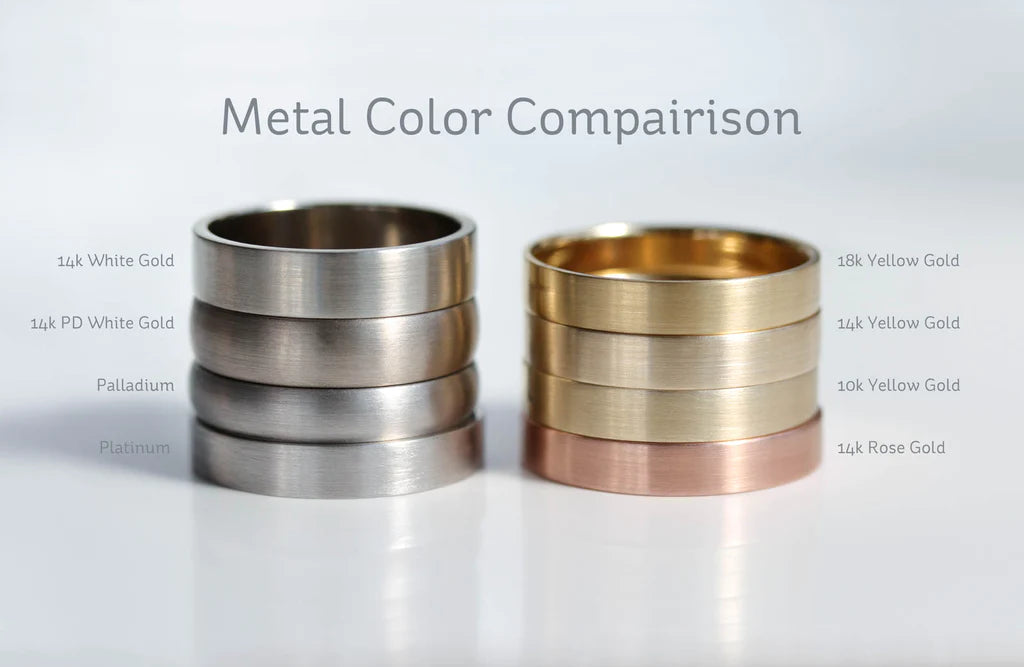For centuries, precious metals have captivated hearts with their dazzling beauty, enduring rarity, and timeless appeal. In the realm of jewelry, they transform from raw materials into exquisite pieces that adorn our bodies and convey personal stories. But with a variety of metals available, choosing the right one for your jewelry can feel overwhelming. This guide aims to demystify the world of jewelry metals, providing you with the knowledge to make informed decisions and discover the perfect piece to treasure.
Gold: A Timeless Treasure
Gold, the king of precious metals, has held a special place in human culture since ancient times. Its warm luster, luxurious feel, and remarkable resistance to tarnish have made it a symbol of wealth, power, and divinity. Gold comes in a variety of colors, from the classic yellow to the sophisticated white and elegant rose, each offering a unique aesthetic.
Types of Gold:
- Yellow Gold: The most common and iconic type of gold, known for its warm, sunny hue.
- White Gold: Created by alloying yellow gold with other metals like palladium or nickel, offering a cooler, modern look.
- Rose Gold: A romantic and trendy choice, achieved by adding copper to yellow gold, resulting in a reddish-pink hue.
Karatage:
Gold purity is measured in karats, with 24K representing pure gold. Jewelry typically uses gold alloys, with 18K (75% pure gold) and 14K (58.3% pure gold) being the most common choices. Higher karatage gold is softer and more valuable, while lower karatage is harder and more affordable.
Silver: The Versatile Beauty
Silver, known for its shimmering white color and affordability, is a popular choice for a wide range of jewelry styles. Its versatility allows it to be crafted into delicate chains, bold statement pieces, and everything in between. Silver is also a hypoallergenic metal, making it ideal for those with sensitive skin.
Types of Silver:
- Sterling Silver: The most common type of silver used in jewelry, containing 92.5% pure silver and 7.5% copper for added strength.
- Fine Silver: Contains 99.9% pure silver, but is softer and more prone to tarnish than sterling silver.
Platinum: The Enduring Choice
Platinum, with its naturally white color, exceptional durability, and resistance to scratches and tarnish, is a top choice for those seeking long-lasting luxury. Its rarity and higher price tag compared to gold and silver make it a coveted symbol of status and commitment.
Benefits of Platinum:
- Durability: Platinum is one of the most durable metals used in jewelry, making it ideal for everyday wear and heirloom pieces.
- Hypoallergenic: Platinum is a hypoallergenic metal, making it suitable for people with sensitive skin.
- Scratch and Tarnish Resistant: Platinum is highly resistant to scratches and tarnish, maintaining its brilliance over time.
Choosing the Right Metal for You
Ultimately, the best metal for your jewelry depends on your personal preferences, budget, and lifestyle. Consider factors like:
- Color preference: Do you prefer the warm glow of gold, the cool elegance of silver, or the sophisticated shine of platinum?
- Durability: Do you need a metal that can withstand everyday wear or something more delicate for occasional use?
- Budget: Precious metals vary in price, with gold generally being the most expensive, followed by platinum and then silver.
- Style and occasion: Are you looking for a classic piece for everyday wear, a statement piece for a special occasion, or something unique and personalized?
By understanding the properties and characteristics of different jewelry metals, you can make informed choices and discover the perfect piece to complement your style and express your individuality. Remember, the true value of a piece lies not only in its material but also in the emotions it evokes and the memories it holds. Choose your jewelry with care, and let it tell your story with timeless beauty and enduring shine.

